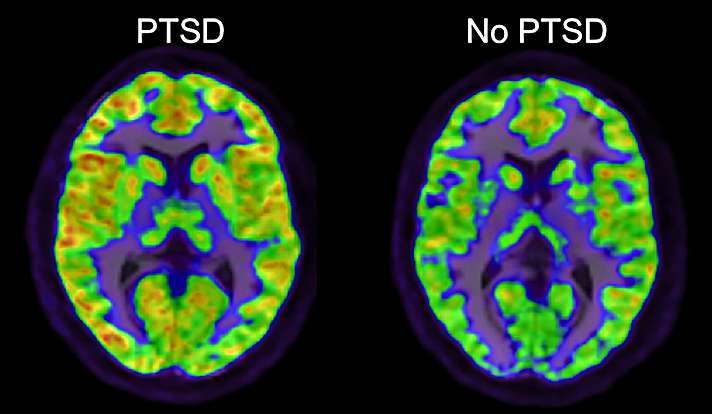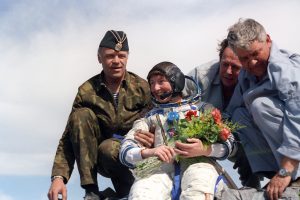Winner of the Fall 2018 StMU History Media Award for
Best Article in the Category of “Military History”
Best Article in the Category of “Science & Technology”
Charles Meyers, a Medical Officer, introduced the term “Shell Shock” to explain symptoms of Post Traumatic Stress Disorder (PTSD) displayed by military after combat in World War I (WWI). Soldiers often experienced symptoms including fatigue, tremor, confusion, nightmares, impaired sight, and impaired hearing. Meyers assumed that these symptoms were caused by the soldiers’ exposure to exploding shells, not necessarily the trauma they were witnessing or going through. In these years, symptoms of widespread PTSD were considered “weak” traits for soldiers by their colleagues and bosses. Even society as a whole started to view these symptoms negatively, which led to the destruction of their relationships after the Shell Shocked soldiers arrived home.1
Military gave Shell Shock victims no sympathy. When soldiers were dismissed from their duties, they were given labels such as “cowardice” or “emotionally weak.” These labels led to soldiers being targeted for abuse from their own side, as well as mock trials in which they were convicted. The pardons they received weren’t honorable, so they were often ashamed of their disorder, which led to more mental issues among the soldiers like depression, anxiety, and even suicide.2

New treatments flipped understandings of how World War I caused drastic changes in the behaviors of these men. Treatment for Shell Shocked victims before Arthur Hurst’s “miracle treatments” were very harsh, as they were often treated with Electroconvulsive Therapy, emotional deprivation, shaming, and solitary confinement. Some of the lesser treatments were hypnosis, massage, rest, and dietary treatments.3
Arthur Hurst primarily used occupational therapy to treat Shell Shocked patients, treating them as humanely and sympathetically as possible. This dignified care allowed for the increased numbers of “saved” soldiers, as they found ways to overcome the abuse and the labels given to them after their dishonorable discharges. Hurst’s treatments became iconic after the Newton Abbott’s Seale Hayne in Devon. Hurst’s approach allowed for 90% of Shell Shocked soldiers to be cured after only a single session.4

Modern day treatments, consist of therapy, as well as new medicines that aid in the control of the symptoms. According to Michael James, a pharmacist, there are Selective Serotonin Reuptake Inhibitors (SSRIs) that block the re-uptake of serotonin in the brain and help with sleep disorders, nightmares, and decreases intrusive thoughts. James also informed me that Serotonin Norepinephrine Reuptake Inhibitors (SNRIs) block the re-uptake of serotonin and norepinephrine in the brain which also decrease intrusive thoughts and provide aid for sleep disorders and nightmares.5
Hurst’s approach led to a change of heart and a consensus to the overall approach by society as a whole. Now, Veterans Affairs, also known as the VA, has a large program that provides aid to veterans with PTSD. However, this evolution of PTSD has not only been beneficial to veterans, but it has also allowed for a more diverse diagnosis of PTSD, in which it is more understood that other people, in addition to veterans, can also experience PTSD. PTSD can be caused from any sort of trauma including car accidents, violent crimes, and domestic violence. Individuals can even develop PTSD from having someone important abandon them as well. The DSM-5 has set a variety of symptoms for PTSD because just like any other disorder, it affects every individual differently. This document allows all individuals to gain access to the tools and help they need to recover from or live with PTSD.6

- Caroline Alexander, “The Shock of War,” Smithsonian Magazine, September 2010, https://www.smithsonianmag.com/history/the-shock-of-war-55376701/. ↵
- “Shell Shock,” BBC Inside Out, March 3, 2004, http://www.bbc.co.uk/insideout/extra/series-1/shell_shocked.shtml. ↵
- “Electroconvulsive Therapy: A History of Controversy, but Also of Help,” The Science Explorer, January 13, 2017, http://thescienceexplorer.com/brain-and-body/electroconvulsive-therapy-history-controversy-also-help; “Arthur Hurst: The Man Who Filmed Shell Shock,” BBC Radio 4, http://www.bbc.co.uk/programmes/articles/4VqPtrjsgcPKtgmYc2M5vXz/arthur-hurst-the-man-who-filmed-shell-shock. ↵
- “Arthur Hurst: The Man Who Filmed Shell Shock,” BBC Radio 4, http://www.bbc.co.uk/programmes/articles/4VqPtrjsgcPKtgmYc2M5vXz/arthur-hurst-the-man-who-filmed-shell-shock. ↵
- Email with Michael James, September 11, 2018. ↵
- Pete Walker, From Surviving to Thriving (Scotts Valley, CA: CreateSpace Independent Publishing Platform, 2013), 13-14. ↵



160 comments
Sabrina Hsu
It’s really sad that PTSD used to be something that was considered “cowardice” and that those with it were looked down upon. Even if it wasn’t PTSD and it was “Shell Shock”, they still shouldn’t have been blaming those with it because it wasn’t something they could have controlled. I’m glad they were able to identify it for what it truly was with medical advances and have stopped the inhumane treatment they were once doing.
Dylan Sanchez
It’s so scary to think that just over one hundred years ago people were getting electrocuted as a treatment of fear. These poor soldiers fought for their land and get welcomed with legal torture, how sad. Thank goodness that modern science has saved us from this wretched method of “healing”.
Marina Castro
Very interesting article. Talking about mental issues and PTSD was not always very easy. Furthermore, PTSD was not always seen as a problem or a real issue. Unfortunately, soldiers or people in general who had suffered some sort of trauma, were forced to believe they had to just move on and get over what they had experienced. Thankfully, science and psychology advanced.
Mia Stahl
To know Post Traumatic Stress Disorder is to know mental illness given to you by putting your life on the line for your country. The stigma placed around PTSD is largely tied to toxic masculinity and the thought that men should not express such emotions as fear or pain. Disregarding such feelings can lead to a certain suppression that results in a build up of emotions that must be expressed in some form another. To call PTSD a weak trait of a soldier is to disregard the real trauma that comes with risking your life for a nation you love.
Alyssa Garza
This article was very interesting to read, and I know a few things about PTSD, but I never knew you can get this from someone important abandoning you. A lot of our solders coming back home must deal with this and some people don’t understand how bad things can get. PTSD is not something that just goes away nowadays people whit PTSD need the support of their loved ones to get through it.
Nathalie Herrera
This article was very enlightening and gave descriptive details to have a concise image of what was going on throughout the article. Yet, it is sad to read that soldiers were being labeled as being “cowards” or “emotionally weak” after their returning from war. That after all the chaos and trauma they must have gone through they come back “home” where they are being judged for have a rough time going through this. Mental health should have been taken on a more serious note. Overall, great article!
Annissa Noblejas
Conditions such as “shell shock” or PTSD are only recently being better understood. Many good men were shunned from continuing military service and labeled cowards because the military as a whole did not understand the post combat changes in these service members. War is not a pretty thing, no matter how politicians try and justify it’s reasoning. War is ugly, harsh, and brutal. Military was training these men to fight in combat, but took nothing into consideration when they came home from fighting.
Madison Guerra
This article was very interesting and it kept me wanting to keep reading. I never knew just how badly ptsd can affect someones mind, it is horrible to see and the ways they used to try to treat it with electroshock therapy was just inhumane. I’m glad that they have slowly moved towards better was to help treat it .
Adam Portillo
Phenomenal article. I feel often times mental health isn’t taken as seriously as it should be. Really enjoyed the use of images used in this article especially the first one that compares a two brains with one having PTSD and the other brain not having PTSD. Another thing I found interesting was the fact that electric shock use to be the primary method of treating PTSD.
Faten Al Shaibi
This article discusses a sensitive issue. Because courage is the soldier’s most important qualities. I did not know the (ptsd) symptoms were caused by the soldiers’ exposure to exploding shells, not necessarily the trauma they were witnessing or going through. even if the war between nations ends, it does not end in the lives of the soldiers involved. I wish peace to the world.